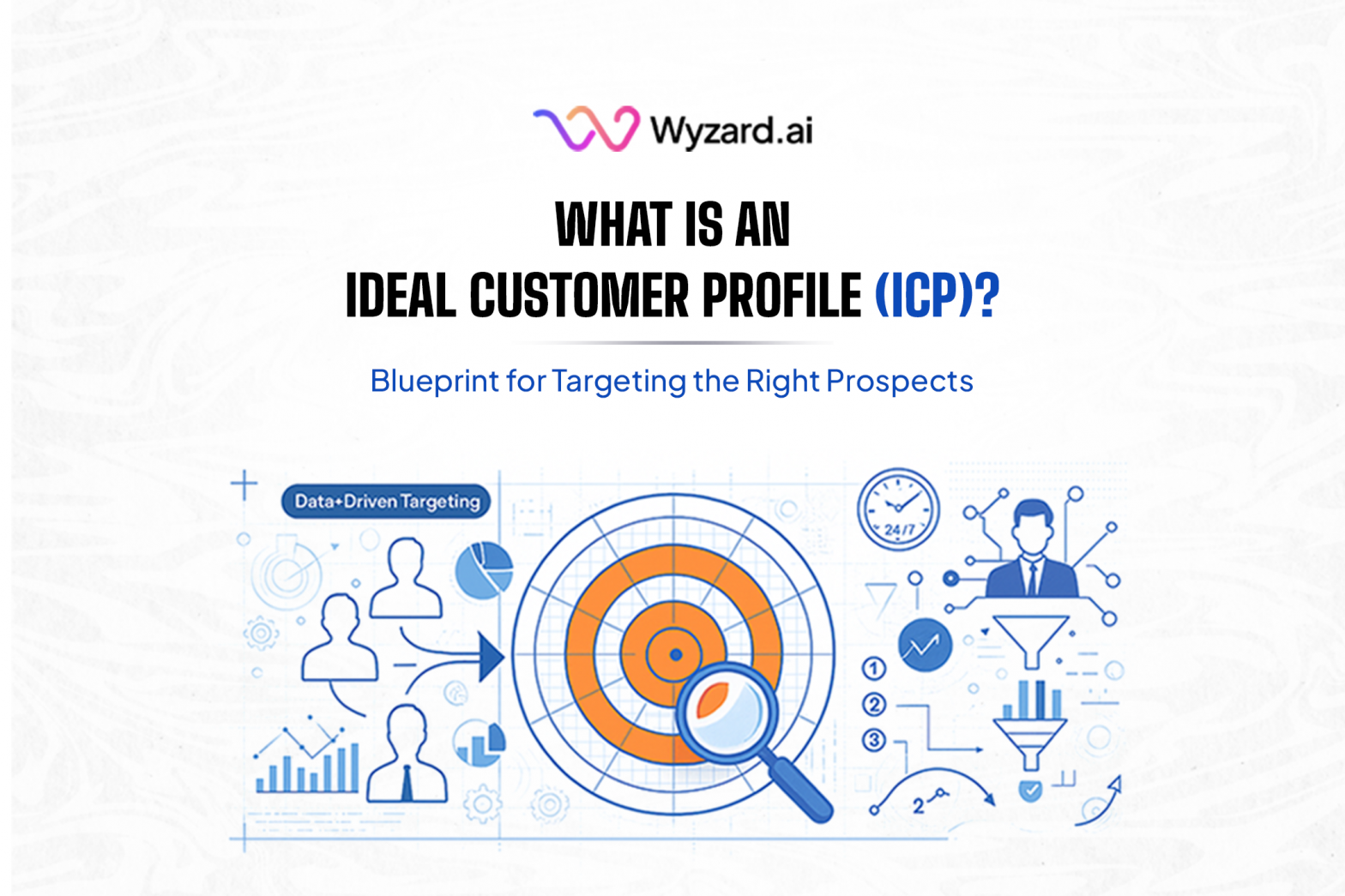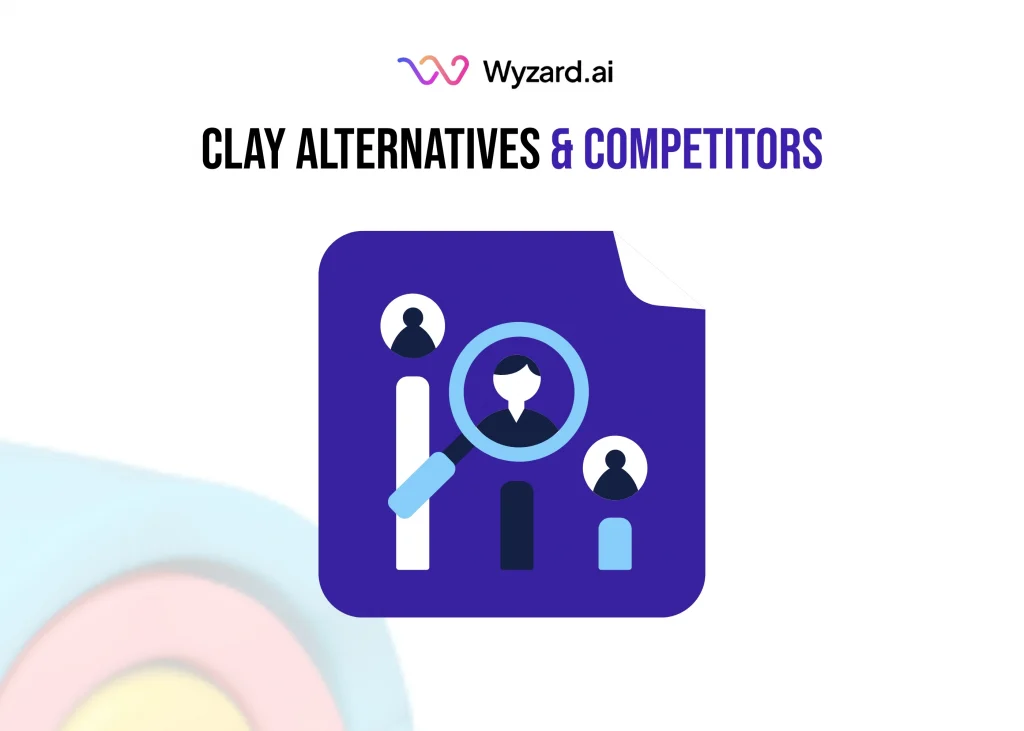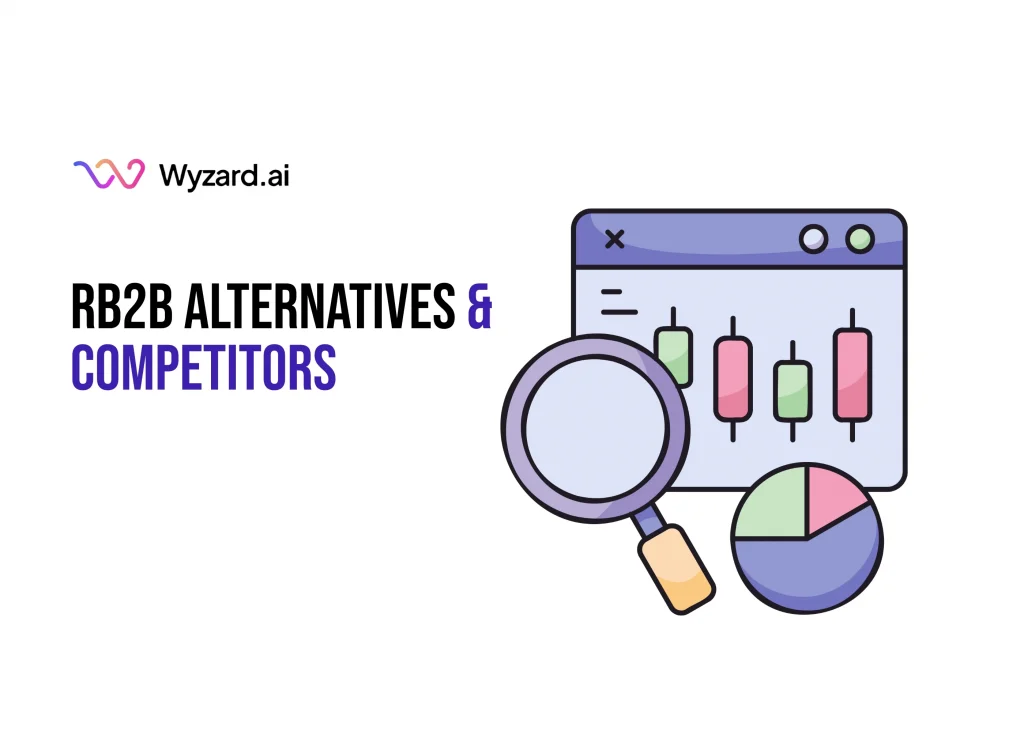Wyzard.ai has raised a $500K angel round backed by leading industry executives and tech veterans. The mission: help ...
What Is an Ideal Customer Profile (ICPs)? Blueprint for Targeting the Right Prospects


Subscribe Now
In the hyper-competitive world of B2B SaaS, driving efficient inbound marketing and rapid lead qualification is essential. You might be generating significant traffic, yet a large portion of prospects never convert because your messaging isn’t tailored to their unique needs. The answer lies in building a data-backed ICP that pinpoints your highest-converting SaaS prospects. This blueprint enables you to zero in on the companies that truly benefit from your solution, maximizing inbound ROI by engaging only the right-fit leads, faster.
What Is an Ideal Customer Profile (ICP)?
At its core, an Ideal Customer Profile (ICP) is a detailed description of the type of company that would gain the most value from your product or service. In simple terms, it defines who your best customers are. For B2B SaaS companies, this might include companies with specific firmographic characteristics, unique behavioral patterns, and distinct pain points that your solution effectively addresses.
Key Elements That Define an ICP
- Firmographic Data: Information such as industry type, company size, annual revenue, location, and technology stack used. This data helps pinpoint which companies are the best fit for your solution.
- Behavioral Data: Patterns related to buying behavior, product usage frequency, and historical purchasing trends. This aspect is crucial for anticipating engagement and identifying potential for long-term relationships.
- Pain Points and Needs: A clear understanding of the challenges your ideal customers face and how your product can solve these specific issues. For SaaS marketers, addressing problems like slow lead response times or manual qualification processes is key.
- Budget and Resources: Evaluating whether potential customers have both the financial ability and the internal capacity to implement your solution efficiently.
- Decision-Making Process: Identification of key decision-makers and refinement of the journey buyers take before purchase. This includes understanding who influences buying decisions and the steps they follow.
In short, when you define ICP or ask what is ICP in marketing, you’re looking to narrow down the list of potential customers to those who will benefit most from your offering, ultimately driving better conversion and retention rates.
Why ICP Marketing Is Essential
For SaaS marketers, ICP marketing isn’t trendy—it’s how lean SaaS teams convert faster with less spend.. Here’s why investing in a refined ICP is vital:
Enhanced Targeting and Personalization
Focusing your efforts on companies that match your ICP means that your messaging can be highly personalized. Instead of spreading your budget and energy across a broad, undefined market, you engage with prospects whose challenges align with the benefits your solution offers.
- Tailored Messaging: Instead of a generic pitch, your content speaks directly to the real pain points of your ideal customers.
- Higher Engagement: When prospects see that you understand their specific needs, engagement naturally improves.
Improved Lead Quality and Reduced Acquisition Costs
By zeroing in on high-intent companies, you end up with leads that are more likely to convert.
- Data-Driven Segmentation: Use firmographic and behavioral data to constantly refine your target list.
- Efficient Resource Allocation: Spend less time chasing unqualified leads and more time nurturing prospects that truly fit your ICP.
Strengthened Inbound Performance
For SaaS businesses, especially those focused on inbound strategies, an accurate ICP helps inform every aspect from content creation to real-time engagement automation.
- Automated, Context-Based Engagement: Advanced tools (like Wyzard.ai) allow you to automatically engage high-value visitors with personalized messages, reducing the manual workload.
- Higher Conversion Rates: A focused approach driven by a robust ICP results in quicker lead qualification and a more efficient sales funnel.
Key Elements of a Successful ICP
Crafting an effective ICP involves blending qualitative insights with quantitative data. Let’s explore the elements that make an ICP robust and actionable.
1. Firmographics
- Industry & Company Size: Identify the sectors in which your solution works best and determine the ideal company size. For instance, many SaaS companies benefit from a solution that scales across small to mid-sized organizations (10–500 employees).
- Location: For SaaS companies, emphasizing a geographical focus helps tailor your marketing strategy to local nuances and compliance requirements.
- Technology Stack: Know which platforms and tools your ideal customers already use (e.g., HubSpot, Salesforce, Marketo). This insight not only refines your messaging but also ensures integration feasibility.
2. Behavioral Insights
- Purchase History & Engagement Patterns: Look at how frequently target companies have made purchases, their usage of similar products, and how often they interact with your offerings.
- Digital Footprint: Evaluate the online behavior, such as website visits, content engagement, and social media interactions. Tools that track buyer signal intelligence can reveal intent among these prospects.
3. Pain Points & Needs
- Identify Specific Challenges: What obstacles are slowing down your candidate’s growth? Is it friction in the lead qualification process or manual nurturing that delays conversions?
- Solution Alignment: Make sure that the problems identified align directly with your solution’s value proposition. For SaaS marketers, addressing issues like lead leakage and slow response times is essential.
4. Decision-Making Process
- Key Contacts: Identify who in the organization ultimately decides. These could be CMOs, Growth Heads, or SDR Leaders.
- Buying Process: Understand the stages of their purchasing journey, from initial research to final approval, to align your strategies accordingly.
5. Budget & Resources
- Affordability and Readiness: Ensure that your ideal customer not only values your solution but is also in a position to invest in it. This includes financial considerations and readiness to implement change.
Building Your ICP: A Step-by-Step Guide
Now that we’ve explored the core building blocks, how do you actually build your Ideal Customer Profile? Below is a step-by-step approach tailored for mid-market to growth-stage B2B SaaS companies in the US.
Step 1: Gather and Analyze Data
Begin with the data you already have. Review your CRM records, sales data, and customer feedback to identify common characteristics among your best customers.
- Data Sources to Explore:
- Historical Customers: Analyze your top accounts and highlight common firmographics and behaviors.
- Digital Interactions: Use web analytics and engagement tools to understand which visitors convert best.
- Team Insights: Consult with your sales and customer success teams for qualitative feedback.
Step 2: Define Core Attributes
From your analysis, list out the key attributes that describe your ideal customers. These attributes should address all the elements discussed earlier—firmographics, behavior, pain points, decision-making, and budget.
- Checklist for Defining Your ICP:
- Company industry, size, and location
- Typical behavioral patterns and digital engagement markers
- Specific challenges and pain points
- Key decision-makers and typical buying cycles
- Budget and readiness indicators
Step 3: Validate and Iterate
Your ICP isn’t static, it should evolve based on real-world insights. Validate your defined profile through targeted campaigns and monitor conversion rates to see if your criteria hold true.
- Pilot Campaign: Start with a small segment and measure performance.
- Feedback Loop: Regularly meet with sales and marketing teams to discuss observations.
- Refinement: Adjust your profile periodically based on new data and market trends (ideally every 6–12 months).
Step 4: Document and Share
Create a centralized document or an internal dashboard that captures your ICP. This resource should be easily accessible to all team members and updated regularly with new insights and metrics.
Ideal Customer Profile Evaluation Criteria
To maintain alignment with your market, it’s important to have evaluation criteria in place. Here are some key factors to consider:
- Conversion Rates: Compare leads that match your ICP against those that don’t.
- Customer Lifetime Value (CLV): Assess if your ideal customers generate long-term value.
- Customer Feedback: Look at qualitative feedback from both sales and customer success teams.
- Market Changes: Stay abreast of industry trends and adjust your criteria accordingly.
Evaluation Checklist
- Analyze conversion rates for ICP-aligned leads versus others.
- Monitor CLV and customer retention among your ICP group.
- Schedule quarterly reviews with cross-functional teams to discuss ICP relevance.
- Update your data sources and adjust attributes periodically based on new insights.
Optimizing Your ICP for Effective Inbound Marketing
An accurately defined ICP can transform your inbound marketing efforts, ensuring that every touchpoint is meaningful to the right audience. Here’s how you can leverage your ICP in your overall strategy:
Automated Engagement with AI-Powered Tools
Using AI-driven platforms like Wyzard.ai, you can create dynamic, real-time interactions that resonate with high-intent visitors. Here are a few key benefits:
- Instant Engagement: Automated interactions ensure that every website visitor receives a timely, personalized response, reducing wait times and improving conversion prospects.
- Contextual Conversations: With a clear ICP, your chatbots and email systems can use relevant data points to address known pain points, making the conversation more relatable and effective.
- Efficient Lead Qualification: By aligning digital interactions with your ICP, you automatically filter out less relevant leads, allowing your sales team to focus on prospects with the highest potential.
Inbound-Only Focus
For SaaS companies, an inbound-only approach ensures that your efforts are solely directed toward prospects already familiar with your brand. This method minimizes distractions and aligns with the modern buyer’s journey, which starts with research and organic engagement rather than cold outreach.
Wyzard.ai stands out by focusing solely on inbound marketing. This approach ensures that every interaction is centered around high-intent, already-engaged prospects, aligning with the needs of modern SaaS marketers.
Checklist for Implementing a Successful ICP Strategy
To ensure that your ICP strategy is executed efficiently, here’s a quick checklist tailored for SaaS marketers:
- Define the Core Elements:
- Identify key firmographics (industry, company size, revenue, location)
- Gather behavioral data (engagement patterns, purchase history)
- Recognize specific pain points and expected benefits
- Confirm the decision-making process and key contacts
- Validate the budget and readiness of the prospect
- Data Collection and Analysis:
- Review historical customer data
- Leverage CRM and buyer signal intelligence tools
- Consult with sales and customer success teams for real-world insights
- Document Your ICP:
- Create a clear, shareable profile document
- Include detailed evaluation criteria and quantitative measures
- Pilot and Iterate:
- Test with a targeted campaign
- Monitor conversion rates and customer feedback
- Adjust criteria based on performance metrics
- Integrate with Marketing Automation:
- Employ AI-driven tools to automate targeted outreach
- Ensure integrations with CRM, MAP, and analytics tools
This checklist not only provides a structured approach to defining your ICP but also ensures continuous alignment with your growth strategy.
How a Defined ICP Drives Outcomes
Let’s consider a real scenario faced by many mid-market SaaS companies. Imagine your marketing team consistently generates website traffic, yet sales report that many leads drop off before reaching the qualification stage. A defined ICP would help you identify that:
- High-intent leads are those that match a specific company size and technology stack.
- The bottleneck lies in manual lead qualification, causing delays in the handoff between marketing and sales.
- A targeted inbound approach using automated engagement based on your ICP can address these pain points.
By employing a targeted ICP strategy, companies have experienced faster response times and improved pipeline efficiency. With tools like Wyzard.ai, designed specifically for SaaS inbound engagements, the process becomes seamless, enabling the marketing team to capture and qualify leads in real time.
How Wyzard.ai Elevates Your ICP Strategy
At Wyzard.ai, we understand that SaaS growth leaders need more than just automation, they need an intelligent copilot that partners with your inbound strategy. Our platform:
- Engages in Real Time: Our marketing copilot initiates conversations with website visitors instantly, ensuring no high-intent lead is left unattended.
- Qualifies Leads Efficiently: Using deep buyer signal intelligence, Wyzard.ai filters and scores leads based on the alignment with your ICP, automating the qualification process without manual intervention.
- Integrates Seamlessly: With native integrations into top CRMs and marketing automation platforms like HubSpot and Salesforce, Wyzard.ai keeps your workflow smooth and data-driven.
- Focuses Exclusively on Inbound: By concentrating solely on inbound engagement, Wyzard.ai ensures that your team deals only with prospects who have already shown interest, accelerating their journey through the sales funnel.
If you’re looking to streamline your inbound marketing process and enhance your pipeline efficiency, it’s time to see Wyzard.ai in action. Our platform is built to complement and elevate your ICP-based strategy with data-driven precision.
Key Takeaways
- A clear and data-driven Ideal Customer Profile narrows down your focus to the most promising prospects, ensuring efficient use of marketing resources.
- Gather firmographic and behavioral data to craft a profile that pinpoints your best-fit customers.
- Regularly update your ICP using defined evaluation criteria to adapt to market and internal changes.
- Use an inbound-only strategy to engage and qualify high-intent leads immediately with the right message.
- Partner your ICP strategy with AI tools such as Wyzard.ai to enhance real-time engagement, streamline lead qualification, and reduce sales friction.
Conclusion
A well-defined Ideal Customer Profile is the cornerstone of an efficient and scalable inbound marketing strategy for SaaS companies. By delineating who your perfect customers are through firmographic insights, behavioral analysis, and clear pain points—you not only save time and resources but also drive more meaningful engagements. This focused approach minimizes wasted efforts and accelerates the sales cycle, ensuring that your team can convert more high-intent leads with less friction.
Ready to revolutionize your inbound lead qualification and boost your pipeline efficiency? Visit Wyzard.ai
FAQ
An ICP is a detailed blueprint of the company that is most likely to benefit from your product or service. It includes key elements like firmographics, behavioral data, pain points, and decision-making processes, enabling you to target high-quality leads effectively.
In business, ICP stands for Ideal Customer Profile. It represents the criteria you use to determine which companies are the best fit for your offerings.
Defining your ICP allows your marketing and sales teams to focus on high-intent leads. This results in improved engagement, faster lead qualification, and more efficient use of resources, all while reducing customer acquisition costs.
Evaluation criteria include conversion rates, customer lifetime value, direct feedback from sales teams, and periodic updates based on market trends. This ensures that your ICP remains relevant over time.
It’s recommended to review your ICP every 6 to 12 months or whenever you notice significant shifts in market dynamics or customer behavior.
Other blogs
The latest industry news, interviews, technologies, and resources.
October 24, 2025
Clay Alternatives & Competitors
For B2B SaaS marketing teams, the right sales intelligence platform can make the difference between hitting revenue targets and ...

RB2B Alternatives & Competitors
When your GTM team loses leads because buyer signals get scattered across disconnected tools, you're not just missing opportunities, ...

 We’ve secured funding to power Signal-to-Revenue AI to GTM teams globally. →
We’ve secured funding to power Signal-to-Revenue AI to GTM teams globally. →



